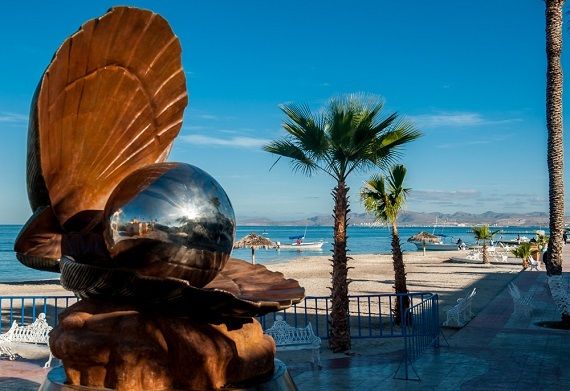
La Paz was the setting for Pulitzer-winning John Steinbeck’s novel, The Pearl.
You don’t find too many islands – if any – in the Caribbean that celebrate the anniversary of their “discovery” by Christopher Columbus. Nor many spots in Mexico that whoop it up to mark their country’s conquest in 1521 by the Spanish invader Hernan Cortez.
One city south of the border celebrates a combination of its founding by Cortez and a fictional best-selling book written by a Spanish author in 1510. In his novel, Adventures of Esplandian, Garci Rodriguez de Montalvo told the story of a black super-woman named Queen Califia who ruled a tribe of Amazons on California, a long, skinny island loaded with gold.
Cortez reportedly was a fan of the book (which by the time he conquered Mexico had taken on an aura of believability). So he put together a troop of explorers to go looking for the shiny stuff on what he thought was the queen’s island (it turned out to be an 800-mile-long peninsula). He named it (after the book) Las Californias.
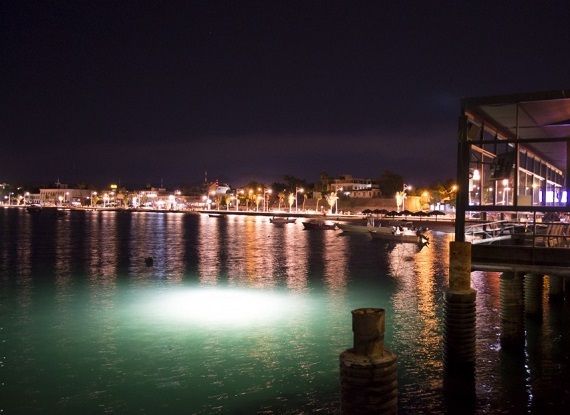
La Paz’s beachfront promenade is the town’s centerpiece.
Cortez trekked north from his palace in Mexico City, then sailed west across a body of water (now called the Sea of Cortez) edging the mainland on one side and Las Californias on the other. In 1525 he landed at a little seaside village he named Puerto de la Santa Cruz, or Port of the Holy Cross.
Cortez struck out in his search for gold, so after a few weeks he went back to his palace in Mexico City. Later on, another Spanish explorer – impressed by how tranquil the area was – renamed the village La Paz , meaning Place of Peace.
It’s still there, only today it’s a city of a quarter-million people and the capital of the lower part of what’s now Baja California. What’s more, seemingly everyone in town turns out for a big annual festival on May 3 honoring Cortez’s founding of La Paz that day nearly five centuries ago.
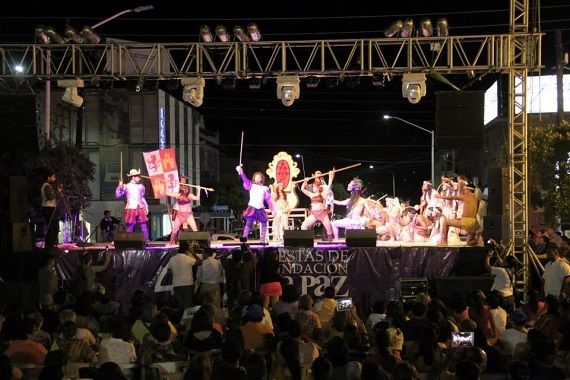
Cortez (with sword raised) tops the cast in La Paz’s historical pageant.
Highlighting the event is a colorful pageant recreating the scene of Cortez’s landing. It’s quite a show, starting with fierce Indians prancing around to the eerie music of drums and flutes. Then a regal-looking woman stretches her arms to the sky as if calling on the gods. Next, a tall, bearded guy and a bunch of lads wearing metal helmets and body armor come ashore from a rowboat. Then other guys show up in brown robes clutching crosses.

Queen Califia raises her arms to the gods.
Concerts, dances, contests and craft fairs round out the celebration, held along La Paz’s three-mile-long beachfront malecon (promenade).
The show’s narration is in Spanish, but it’s not hard for non-Spanish speakers to figure out the first bunch of guys represent Cortez’s landing at La Paz. The symbolism of the robed guys with the crosses is pretty obvious. And the woman reaching up to the gods is – you guessed it – Queen Califia (Montalvo’s book must have been a hot-seller centuries ago in the port, too).
With only a little nudge, Califia turns into California. Get it?
A tour of the town takes visitors on a jump back in time to old-world Mexico. You’ll stroll around lanes lined with mom-and-pop shops and what passes for department stores along with all kinds of restaurants, cantinas and a 150-year-old cathedral. Chances are you’ll eventually wind up rubbing elbows with strolling couples, joggers and bicyclists on the three-mile-long waterfront promenade. Or perhaps in the town square, where many of the folks who hang their sombreros around La Paz gather to shoot the breeze and listen to the sweet strumming of Mexican guitars.
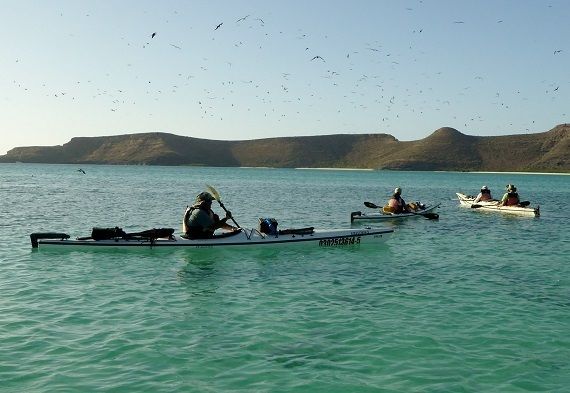
Kayakers paddle to one of La Paz’s offshore islands.
Among big draws to La Paz is the offshore island of Espiritu Santo, about an hour’s boat ride from the city. Pericu and Guaycura Indians once paddled canoes to the island to harvest its abundant pearl beds.
The pearls are long gone, but the island is still rimmed by boats. Only now they’re full of tourists who’ve come to swim with the sea lions and watch whales passing by this UNESCO World Heritage Site.
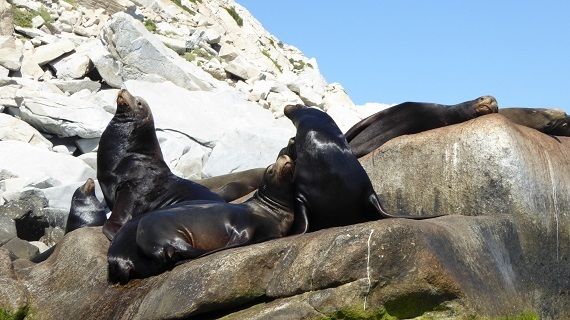
Sea lions frolic on the rocks of Espiritu Santo.
Getting there: La Paz is about a two- or three-hour drive (depending on the traffic) from the super-resort of Los Cabos at the tip of the peninsula. Or you can spend a day or two driving down a transpeninsula highway starting a little south of San Diego. Among other options, you can get to La Paz by ferry from Mazatlan and Topolobampo on the Mexican mainland or on intra-Mexico flights operated by commuter airlines.

Staying there: Visitors who opt to stay over for a couple of days will find some two dozen tourist-class hotels around town. One is the five-star CostaBaja Resort, where you can have dinner in the property’s top-rated restaurant, Steinbeck’s (named for the American Pulitzer-prize winning author John Steinbeck, who used La Paz for the setting if his best-selling 1947 novel, The Pearl).
